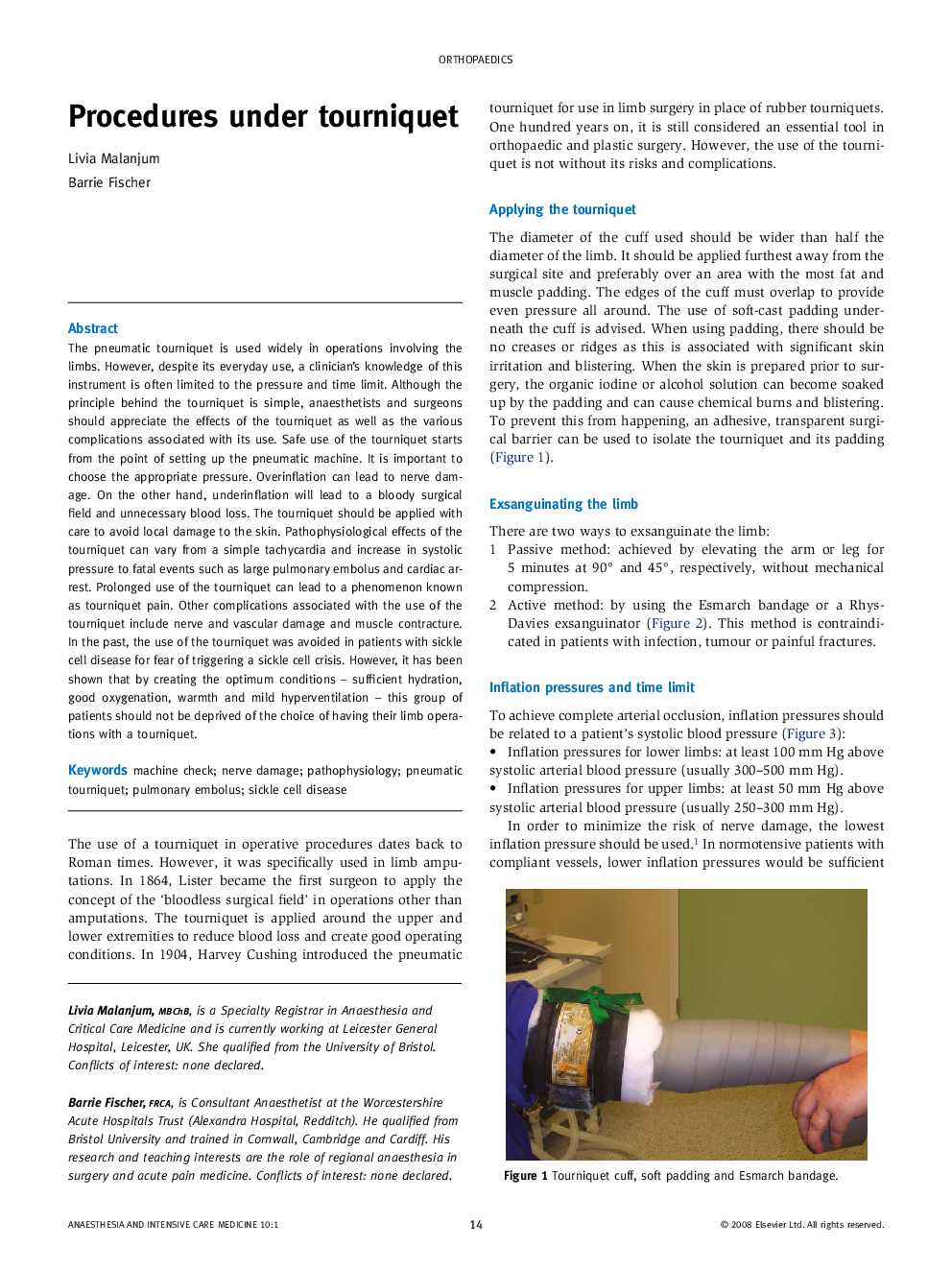| کد مقاله | کد نشریه | سال انتشار | مقاله انگلیسی | نسخه تمام متن |
|---|---|---|---|---|
| 2743094 | 1148649 | 2009 | 4 صفحه PDF | دانلود رایگان |

The pneumatic tourniquet is used widely in operations involving the limbs. However, despite its everyday use, a clinician’s knowledge of this instrument is often limited to the pressure and time limit. Although the principle behind the tourniquet is simple, anaesthetists and surgeons should appreciate the effects of the tourniquet as well as the various complications associated with its use. Safe use of the tourniquet starts from the point of setting up the pneumatic machine. It is important to choose the appropriate pressure. Overinflation can lead to nerve damage. On the other hand, underinflation will lead to a bloody surgical field and unnecessary blood loss. The tourniquet should be applied with care to avoid local damage to the skin. Pathophysiological effects of the tourniquet can vary from a simple tachycardia and increase in systolic pressure to fatal events such as large pulmonary embolus and cardiac arrest. Prolonged use of the tourniquet can lead to a phenomenon known as tourniquet pain. Other complications associated with the use of the tourniquet include nerve and vascular damage and muscle contracture. In the past, the use of the tourniquet was avoided in patients with sickle cell disease for fear of triggering a sickle cell crisis. However, it has been shown that by creating the optimum conditions – sufficient hydration, good oxygenation, warmth and mild hyperventilation – this group of patients should not be deprived of the choice of having their limb operations with a tourniquet.
Journal: Anaesthesia & Intensive Care Medicine - Volume 10, Issue 1, January 2009, Pages 14–17